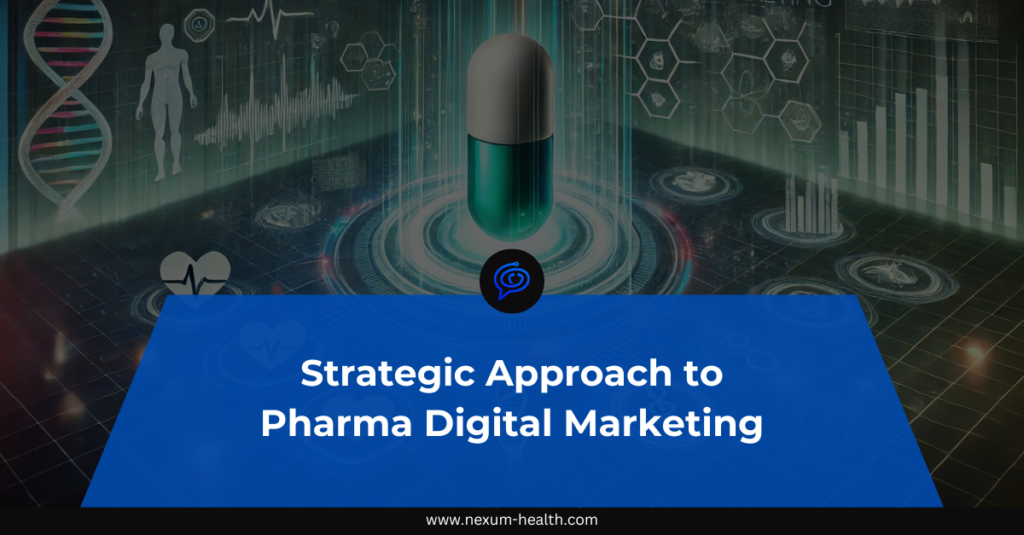Launching a new product isn’t merely about introducing a pill or treatment option to the market. It’s a strategic plan within a complex ecosystem shaped by numerous factors, from regulatory to patient demographics and competitor activity. Understanding and effectively navigating these market dynamics constitute the cornerstone of a successful pharmaceutical launch.
Market Analysis
Before boarding on the journey of launching a new pharmaceutical product, thorough market analysis is paramount. This involves entering deep into the current areas to identify gaps, opportunities, and potential challenges. Market analysis encompasses an array of factors, including:
1. Disease area: A comprehensive understanding of the disease or condition the new pharmaceutical product aims to address is essential. This involves not only assessing the prevalence and incidence rates but also understanding the unmet needs of patients and healthcare providers.
2. Competitive scope: Analysing existing treatments and competitors within the therapeutic area provides insights into market saturation, pricing strategies, and differentiation opportunities. Understanding competitor strengths and weaknesses allows pharmaceutical companies to position their product effectively.
3. Regulatory Environment: Regulatory requirements vary across regions and can significantly impact the launch timeline and strategy. Overcoming the complex web of regulations, including Food and Drug Administration (FDA) approvals in the US or European Medicines Agency (EMA) approvals in Europe, requires meticulous planning and compliance.
4. Patient Demographics and Preferences: Recognising the demographics, socioeconomic factors, and cultural nuances of the target patient population is crucial for adapting marketing strategies and patient outreach programs. Patient-centric approaches resonate more deeply and foster trust and loyalty.
Strategic Decision-Making
Armed with insights gathered from market analysis, pharmaceutical companies can make informed decisions at every stage of the launch process:
1. Target Audience Identification: Understanding the key stakeholders – be it healthcare professionals, patients, payers, or caregivers – allows companies to adapt their messaging and outreach efforts effectively. Each audience segment may have distinct needs, preferences, and communication channels.
2. Product Positioning and Differentiation: Based on competitive analysis and market insights, defining a clear value proposition and positioning strategy for the new pharmaceutical product is critical. Highlighting unique features, benefits, and clinical advantages helps differentiate the product in a crowded marketplace.
3. Market Access Strategy: Securing favourable formulary placement and reimbursement agreements with payers is essential for ensuring widespread access and adoption of the new pharmaceutical product. Market access considerations should be integrated into the launch strategy from the outset.
The Foundation of Exceptional Pharmaceutical Launches
Where innovation is paramount, the journey from concept to market is paved with rigorous research and development (R&D) endeavours. Behind every successful pharmaceutical launch lies a foundation of excellence in R&D, encompassing a multitude of scientific, regulatory, and logistical challenges.
1. Scientific Discovery and Innovation
At the heart of any pharmaceutical launch is a ground-breaking scientific discovery or innovation that addresses an unmet medical need or offers significant therapeutic benefits. This initial phase of R&D involves basic research, preclinical studies, and early-stage development to identify promising drug candidates and elucidate their mechanisms of action. Investing in cutting-edge research and fostering a culture of innovation are fundamental to driving breakthroughs in drug development.
2. Clinical Development and Evidence Generation
The clinical development phase represents a pivotal stage in the journey towards a pharmaceutical launch, where promising drug candidates undergo rigorous testing in human subjects to assess safety, efficacy, and tolerability. Clinical trials, conducted in accordance with regulatory guidelines and ethical standards, generate the evidence necessary to support regulatory submissions and eventual market approval. Designing robust clinical trials, recruiting diverse patient populations, and collecting high-quality data are essential components of successful clinical development programs.
3. Regulatory Strategy and Compliance
Overcoming regulatory obstacles is a cornerstone of pharmaceutical R&D, requiring careful planning, expertise, and adherence to stringent guidelines. Regulatory professionals work closely with cross-functional teams to develop and execute comprehensive regulatory strategies that facilitate timely approvals and market access. This entails preparing regulatory submissions, responding to inquiries from regulatory agencies, and ensuring compliance with evolving regulatory requirements throughout the product lifecycle.
4. Manufacturing and Supply Chain Management
Ensuring the reliable supply of high-quality pharmaceutical products is contingent upon robust manufacturing processes and efficient supply chain management. From sourcing raw materials to manufacturing finished dosage forms, pharmaceutical companies must adhere to stringent quality standards and regulatory requirements to maintain product integrity and safety. Implementing robust quality control measures, optimising manufacturing processes, and mitigating supply chain risks are integral to achieving operational excellence in manufacturing and distribution.
Creating a Compelling Narrative for Pharmaceutical Success
Strategic brand positioning plays a pivotal role in shaping perceptions, driving adoption, and ultimately achieving commercial success. A well-defined brand positioning strategy not only differentiates a pharmaceutical product from its competitors but also resonates with key stakeholders, including healthcare professionals, patients, payers, and investors.
1. Market Segmentation and Targeting
A successful brand positioning strategy begins with a deep understanding of the target market and its diverse segments. Through market segmentation analysis, pharmaceutical companies identify distinct patient populations, disease subtypes, and healthcare provider preferences. By adapting messaging, marketing channels, and value propositions to specific audience segments, companies can maximise relevance and resonance, driving engagement and adoption.
2. Value Proposition Development
Central to brand positioning is the articulation of a compelling value proposition that communicates the unique benefits and differentiation of the pharmaceutical product. This entails identifying key clinical attributes, patient outcomes, and competitive advantages that resonate with target audiences. Creating a clear, concise, and differentiated value proposition is essential for capturing attention, building credibility, and driving preference in a crowded marketplace.
3. Brand Personality and Identity
Defining the personality and identity of the pharmaceutical brand is essential for establishing emotional connections and fostering brand loyalty. Brand personality attributes such as trustworthiness, innovation, and empathy can influence perceptions and behaviours among healthcare professionals, patients, and other stakeholders. Consistent branding across touchpoints, including packaging, marketing materials, and digital platforms, reinforces brand identity and cultivates brand recognition over time.
4. Competitive Positioning and Market Differentiation
Analysing competitor positioning and market trends is critical for identifying whitespace opportunities and defining a unique positioning strategy. By conducting competitive benchmarking and SWOT analysis, pharmaceutical companies can identify areas of differentiation, competitive advantages, and potential threats. Leveraging these insights, companies can position their product effectively against competitors, highlighting distinctive features, clinical benefits, and value-added services.
Pillars of Pharmaceutical Launch Success
Physicians serve as pivotal stakeholders, wielding influence over treatment decisions, patient referrals, and market perceptions. Consequently, establishing strong relationships with healthcare professionals (HCPs) through effective education and engagement strategies is critical for the success of pharmaceutical launches.
1. Comprehensive Understanding of Physician Needs
Before boarding on physician education initiatives, pharmaceutical companies must gain a comprehensive understanding of HCPs’ educational needs, preferences, and practice patterns. This involves conducting needs assessments, surveys, and advisory board meetings to identify knowledge gaps, clinical challenges, and areas for educational support. By adapting educational content and resources to meet physicians’ specific needs, companies can enhance engagement and relevance, fostering stronger relationships with HCPs.
2. Continuing Medical Education (CME) Programs
Continuing Medical Education (CME) programs play a crucial role in providing physicians with accredited educational opportunities to stay abreast of the latest medical advances, treatment guidelines, and therapeutic options. Pharmaceutical companies can collaborate with accredited providers to develop and deliver CME activities that address unmet educational needs and support evidence-based decision-making among HCPs. Offering CME credits incentivises participation and underscores the value of educational initiatives.
3. Peer-to-Peer Education and Key Opinion Leader (KOL) Engagement
Peer-to-peer education and engagement with Key Opinion Leaders (KOLs) enable pharmaceutical companies to leverage the expertise and influence of respected thought leaders within specific therapeutic areas. By partnering with KOLs to develop educational content, deliver presentations, and facilitate peer discussions, companies can disseminate clinical insights, share best practices, and build credibility among the medical community. KOL engagement fosters advocacy, drives adoption, and amplifies the reach of educational initiatives.
4. Clinical Support and Resources
Providing physicians with access to clinical support resources, such as medical science liaisons (MSLs), clinical trial data, and peer-reviewed publications, enhances their confidence in prescribing and advocating for the pharmaceutical product. MSLs serve as valuable resources for answering complex clinical questions, addressing safety concerns, and facilitating scientific exchange between pharmaceutical companies and healthcare professionals. Equipping physicians with evidence-based information and real-world data strengthens their trust and loyalty to the brand.
5. Digital Engagement Platforms
In an increasingly digital world, pharmaceutical companies are leveraging digital engagement platforms to connect with physicians in meaningful ways. Interactive websites, webinars, virtual conferences, and mobile applications provide HCPs with convenient access to educational resources, clinical tools, and peer networking opportunities. Digital engagement platforms enable pharmaceutical companies to reach a broader audience of physicians, personalise educational experiences, and track engagement metrics to optimise outreach efforts.
Effective Marketing Strategies
Effective marketing strategies serve as the cornerstone for successful product launches. Beyond the development of ground-breaking treatments, pharmaceutical companies must navigate complex regulatory environments, engage diverse stakeholders, and differentiate their products in crowded markets.
1. Comprehensive Market Analysis
Before formulating marketing strategies, pharmaceutical companies must conduct comprehensive market analysis to understand the competitive area, patient demographics, healthcare provider preferences, and regulatory considerations. By gaining insights into market dynamics, unmet needs, and competitor positioning, companies can identify opportunities and develop targeted strategies to maximise impact and ROI.
2. Multichannel Marketing Approach
In today’s digital age, pharmaceutical marketing extends beyond traditional channels to encompass a diverse array of platforms and touchpoints. A multichannel marketing approach leverages a mix of digital marketing, social media, print media, conferences, and direct-to-physician outreach to reach target audiences at various stages of the healthcare journey. By engaging stakeholders across multiple channels, pharmaceutical companies can enhance brand visibility, drive engagement, and foster relationships with key influencers.
3. Educational Initiatives and Thought Leadership
Educational initiatives play a crucial role in building trust, credibility, and awareness around pharmaceutical products. By providing healthcare professionals, patients, and caregivers with valuable educational resources, companies position themselves as trusted sources of information and thought leaders in their respective therapeutic areas. Educational content can take the form of webinars, whitepapers, CME programs, and disease awareness campaigns, empowering stakeholders to make informed decisions about treatment options.
4. Patient-Centric Marketing Strategies
Recognising the growing importance of patient empowerment and engagement, pharmaceutical companies are increasingly adopting patient-centric marketing strategies. These strategies prioritise the needs, preferences, and experiences of patients, aiming to improve health outcomes and enhance patient satisfaction. By developing patient support programs, adherence initiatives, and digital health tools, companies can address barriers to treatment access and adherence, ultimately driving better patient outcomes and long-term brand loyalty.
5. Measuring and Optimising Performance
Continuous measurement and optimisation are essential components of effective marketing strategies, allowing pharmaceutical companies to track performance, identify areas for improvement, and optimise resource allocation. Key performance indicators (KPIs) such as brand awareness, customer engagement, and ROI enable companies to assess the effectiveness of their marketing efforts and make data-driven decisions to optimise campaigns and tactics.
Patient-Centric Approaches for Pharmaceutical Launch Success
Patient-centricity has emerged as a guiding principle for pharmaceutical companies seeking to deliver value beyond the pill. Recognising the pivotal role of patients in treatment decision-making and health outcomes, pharmaceutical launches increasingly prioritise patient-centric approaches aimed at empowering, educating, and engaging patients throughout their healthcare journey.
1. Understanding Patient Needs and Preferences
Central to patient-centricity is a deep understanding of patients’ needs, preferences, and experiences. Pharmaceutical companies conduct patient research, focus groups, and surveys to gain insights into the challenges, aspirations, and priorities of target patient populations. By listening to patients’ voices and incorporating their perspectives into product development and marketing strategies, companies can enhance relevance, trust, and satisfaction, ultimately driving adoption and adherence.
2. Educational Initiatives and Disease Awareness Campaigns
Educational initiatives and disease awareness campaigns play a pivotal role in empowering patients with knowledge, skills, and resources to manage their health effectively. Pharmaceutical companies develop educational materials, websites, and digital tools to provide patients with accurate information about their condition, treatment options, and self-care strategies. By raising awareness about disease prevention, early detection, and symptom management, companies empower patients to make informed decisions and advocate for their health needs.
3. Patient Support Programs and Services
Patient support programs and services offer practical assistance, emotional support, and financial resources to patients navigating the complexities of their healthcare journey. These programs may include reimbursement assistance, medication adherence support, nurse helplines, and peer support networks. By alleviating barriers to treatment access and adherence, pharmaceutical companies enhance patient satisfaction, improve health outcomes, and differentiate their brand in a competitive marketplace.
4. Digital Health Technologies and Remote Monitoring
The integration of digital health technologies, such as mobile apps, wearable devices, and telehealth platforms, enables pharmaceutical companies to engage patients in remote monitoring, self-management, and telemedicine consultations. These digital tools empower patients to track their health metrics, adhere to treatment regimens, and communicate with healthcare providers conveniently from their homes. By leveraging digital health technologies, companies enhance patient convenience, compliance, and satisfaction, driving long-term engagement and loyalty.
5. Patient Advocacy and Community Engagement
Engaging patients as advocates and partners in their care fosters a sense of belonging, ownership, and empowerment within the patient community. Pharmaceutical companies collaborate with patient advocacy organizations, support groups, and online communities to amplify patient voices, raise awareness about disease challenges, and advocate for policy changes. By championing patient advocacy initiatives, companies demonstrate their commitment to patient-centricity and build trust and loyalty among patients and caregivers.
Fostering Success in Pharmaceutical Launches
Successful product launches often rely on the strength of collaborative partnerships forged with various stakeholders across the healthcare ecosystem. These partnerships bring together diverse expertise, resources, and perspectives to navigate regulatory hurdles, address unmet needs, and drive adoption of innovative treatments.
1. Strategic Alliances with KOLs
Collaborating with KOLs in relevant therapeutic areas enables pharmaceutical companies to leverage the expertise and influence of respected thought leaders within the medical community. KOL partnerships facilitate scientific exchange, peer-to-peer education, and advocacy initiatives, enhancing brand credibility and driving adoption among healthcare professionals. By engaging KOLs early in the product development process, companies can gather valuable insights, validate clinical data, and gain support for their launch strategies.
2. Academic and Research Collaborations
Partnering with academic institutions, research organisations, and biotechnology companies fosters innovation, accelerates drug discovery, and expands access to novel technologies and intellectual property. Collaborative research initiatives enable pharmaceutical companies to access diverse scientific expertise, share resources, and co-develop promising drug candidates. By nurturing academic collaborations, companies can enhance their pipeline, mitigate development risks, and position themselves at the forefront of scientific innovation.
3. Patient Advocacy and Support Organisations
Engaging patient advocacy organisations, support groups, and patient communities strengthens pharmaceutical companies’ understanding of patient needs, preferences, and challenges. Collaborative partnerships with patient advocacy organisations facilitate patient education, disease awareness campaigns, and access to support services. By aligning with patient-centric initiatives, companies demonstrate their commitment to addressing unmet needs, improving patient outcomes, and fostering trust and loyalty among patients and caregivers.
4. Cross-Industry Collaborations
Collaborating with stakeholders outside the traditional healthcare sector, such as technology companies, insurers, and policymakers, opens new avenues for innovation, market access, and patient engagement. Cross-industry collaborations enable pharmaceutical companies to leverage emerging technologies, data analytics, and digital health solutions to enhance patient care and improve healthcare delivery. By forging strategic alliances with non-traditional partners, companies can expand their reach, drive value creation, and differentiate their offerings in a competitive marketplace.
5. Supply Chain and Distribution Partnerships
Establishing robust partnerships with supply chain and distribution partners is essential for ensuring seamless manufacturing, distribution, and delivery of pharmaceutical products to patients worldwide. Collaborative partnerships with contract manufacturing organisations (CMOs), logistics providers, and wholesalers optimise supply chain efficiency, mitigate supply chain risks, and improve product availability and accessibility. By aligning with reliable partners, companies can streamline operations, reduce costs, and enhance customer satisfaction throughout the product lifecycle.
The Art of Timing in Pharmaceutical Success
Timing is crucial in the pharmaceutical industry, where the launch of a new product requires meticulous planning, strategic execution, and adept navigation of regulatory area. Launching a pharmaceutical product at the right time can significantly impact its market reception, competitive positioning, and long-term success.
1. Market Readiness Assessment
Before initiating a pharmaceutical launch, companies must conduct a thorough assessment of market readiness to gauge demand, competitive dynamics, and regulatory requirements. This involves analysing market trends, competitor activities, and patient needs to identify appropriate moments for market entry. By understanding market nuances and timing their launch accordingly, companies can capitalise on emerging opportunities and mitigate risks associated with market saturation or regulatory changes.
2. Regulatory Approval and Compliance
Achieving regulatory approval is a critical milestone in the launch process, requiring companies to overcome complex regulatory pathways and adhere to stringent compliance standards. Timely submission of regulatory dossiers, proactive engagement with regulatory agencies, and compliance with Good Manufacturing Practices (GMP) are essential for securing market authorisation and ensuring product quality and safety. Delays or setbacks in regulatory approval can impact launch timelines and market competitiveness, underscoring the importance of meticulous planning and execution.
3. Market Access and Reimbursement
Securing favourable market access and reimbursement agreements with payers is essential for ensuring widespread adoption and commercial success post-launch. Pharmaceutical companies must engage payers early in the launch process, demonstrating the value, cost-effectiveness, and clinical utility of their product. Negotiating formulary placement, securing favourable reimbursement rates, and addressing payer concerns proactively are critical for optimising market access and maximising patient access to the new pharmaceutical product.
4. Launch Strategy and Tactical Execution
Developing a comprehensive launch strategy and executing it with precision is key to achieving a successful pharmaceutical launch. This involves aligning cross-functional teams, setting clear objectives, and coordinating activities across marketing, sales, medical affairs, and supply chain functions. From promotional campaigns and educational initiatives to sales force training and distribution logistics, every aspect of the launch plan must be meticulously orchestrated to maximise impact and optimise resource allocation.
5. Post-Launch Monitoring and Adaptation
Launch success extends beyond the initial rollout, requiring ongoing monitoring, evaluation, and adaptation to market dynamics. Pharmaceutical companies must track KPIs, gather feedback from stakeholders, and assess market trends to identify opportunities for optimisation and refinement. Continuous improvement initiatives, such as post-launch studies, market research, and customer feedback mechanisms, enable companies to fine-tune their strategies and address evolving needs and preferences effectively.
Continuous Monitoring and Adaptation
Achieving launch success is not merely a one-time event but an ongoing journey that requires continuous monitoring, evaluation, and adaptation. After the initial rollout, pharmaceutical companies must remain vigilant, responsive, and agile to navigate market dynamics, address emerging challenges, and capitalise on opportunities for growth.
1. Performance Tracking and Key Metrics
Continuous monitoring begins with tracking KPIs and metrics to assess the effectiveness and impact of the launch strategy. These may include sales figures, market share, physician prescribing patterns, patient adherence rates, and customer satisfaction scores. By regularly analysing performance data, companies can identify trends, anomalies, and areas for improvement, enabling informed decision-making and strategic course corrections.
2. Market Research and Customer Feedback
Gathering insights from market research and soliciting feedback from customers, healthcare professionals, patients, and other stakeholders provide valuable perspectives on product performance, market dynamics, and customer satisfaction. Surveys, focus groups, advisory boards, and social media monitoring offer channels for capturing qualitative and quantitative feedback, uncovering unmet needs, and identifying opportunities for product enhancements or service improvements.
3. Competitive Intelligence and Benchmarking
Monitoring competitor activities, market trends, and industry benchmarks allows pharmaceutical companies to benchmark their performance, identify competitive threats, and capitalise on market opportunities. Competitive intelligence tools, market research reports, and industry publications provide valuable insights into competitor strategies, product launches, and market positioning, informing strategic decision-making and differentiation efforts.
4. Regulatory Compliance and Post-Market Surveillance
Ensuring ongoing compliance with regulatory requirements and conducting post-market surveillance activities are essential for maintaining product safety, efficacy, and quality post-launch. Pharmaceutical companies must adhere to pharmacovigilance regulations, monitor adverse events, and report safety data to regulatory authorities promptly. Proactive risk management and compliance monitoring mitigate regulatory risks and safeguard patient health and trust.
5. Iterative Optimisation and Innovation
Continuous monitoring enables pharmaceutical companies to iterate, optimise, and innovate their product offerings, marketing strategies, and customer experiences iteratively. By leveraging insights from performance data, customer feedback, and market research, companies can refine their approach, introduce product enhancements, and explore new opportunities for differentiation and value creation. Continuous improvement fosters agility, resilience, and competitiveness in a dynamic marketplace.
Conclusion
In conclusion, the path to a successful pharmaceutical launch is paved with strategic planning, meticulous execution, and continuous adaptation. By prioritising market analysis, strategic decision-making, scientific excellence, stakeholder engagement, and timing, pharmaceutical companies can overcome the complexities of the healthcare ecosystem and maximise the impact of their innovations. Continuous monitoring, collaboration, and innovation are key to sustaining success beyond the launch phase, ensuring ongoing relevance, differentiation, and value creation in a dynamic and competitive environment. Through a patient-centric approach and collaborative partnerships with diverse stakeholders, pharmaceutical companies can drive meaningful change, improve patient outcomes, and ultimately make a positive impact on global health.






